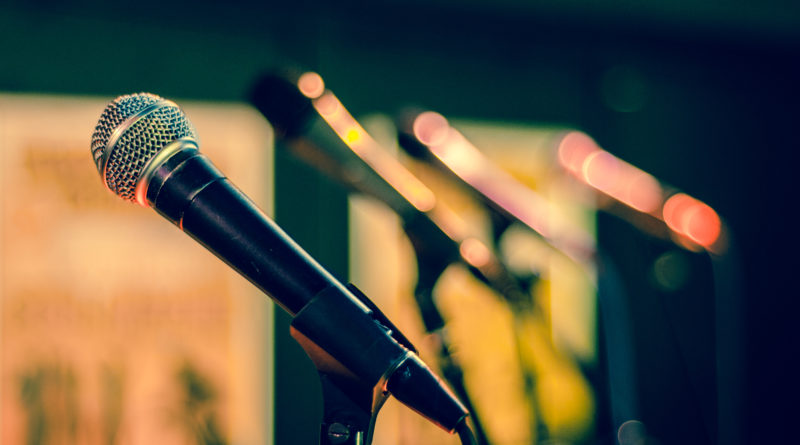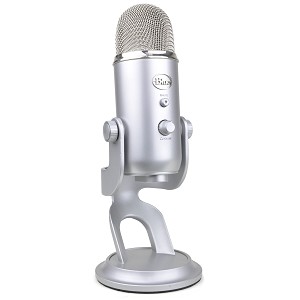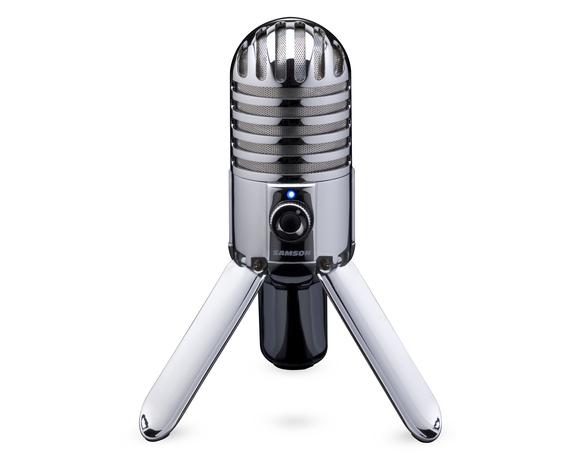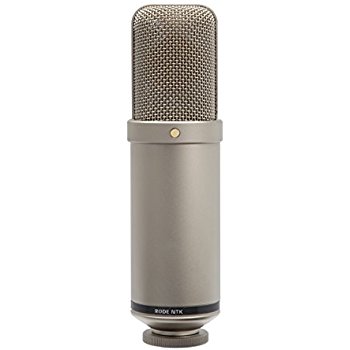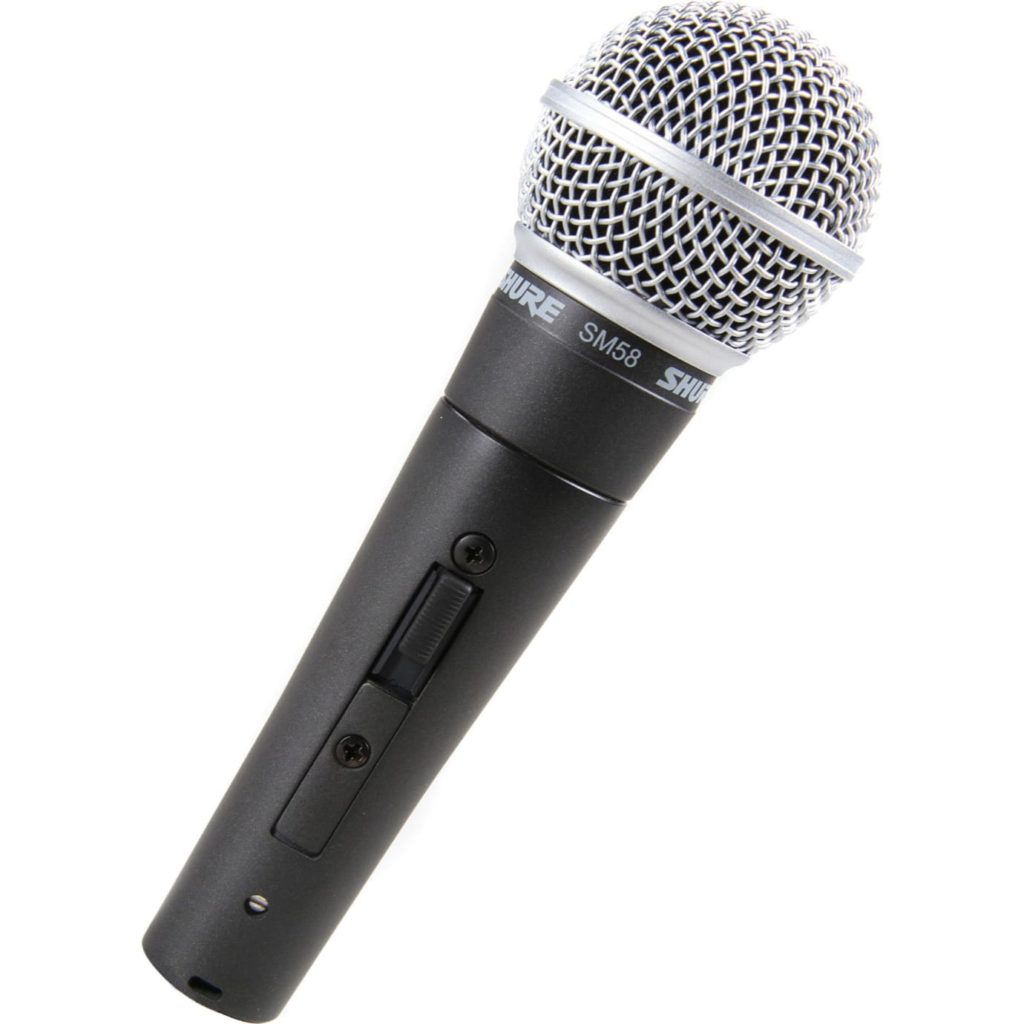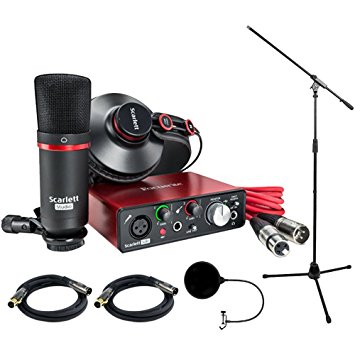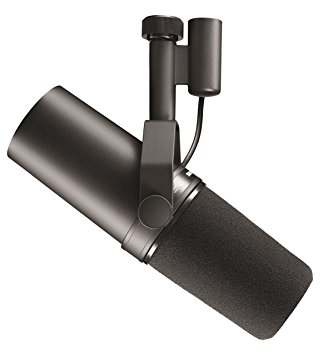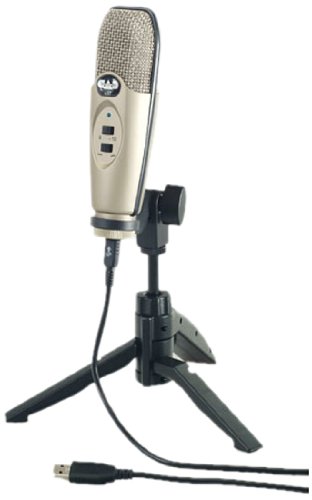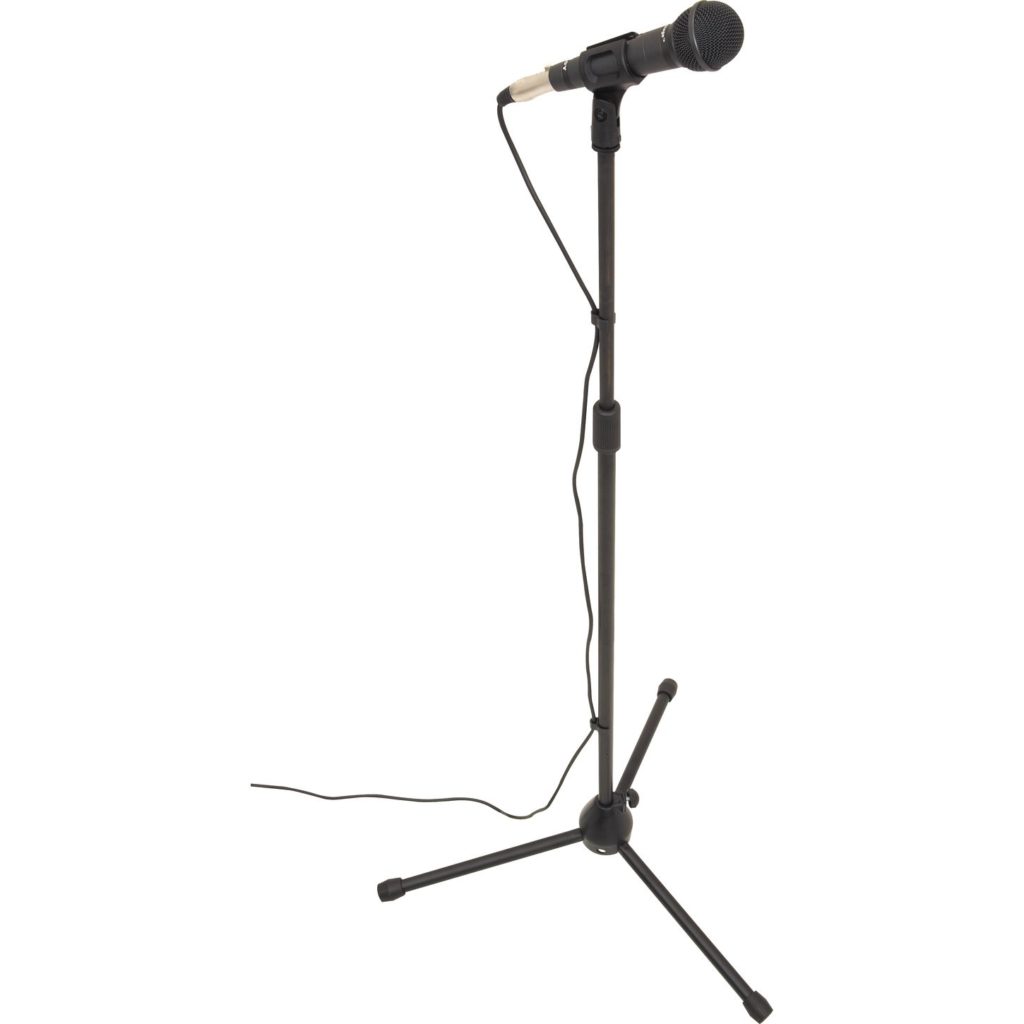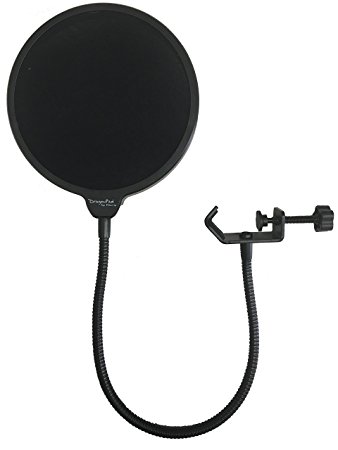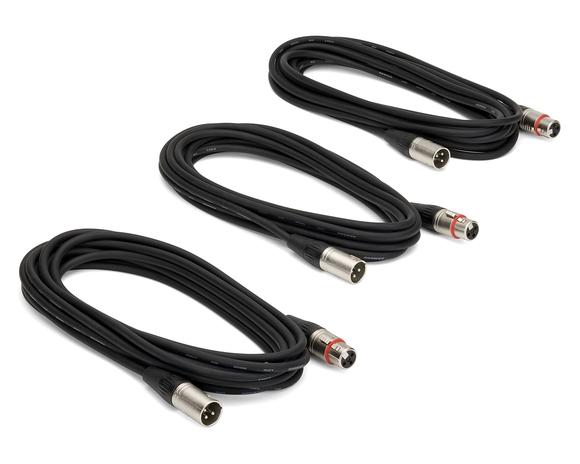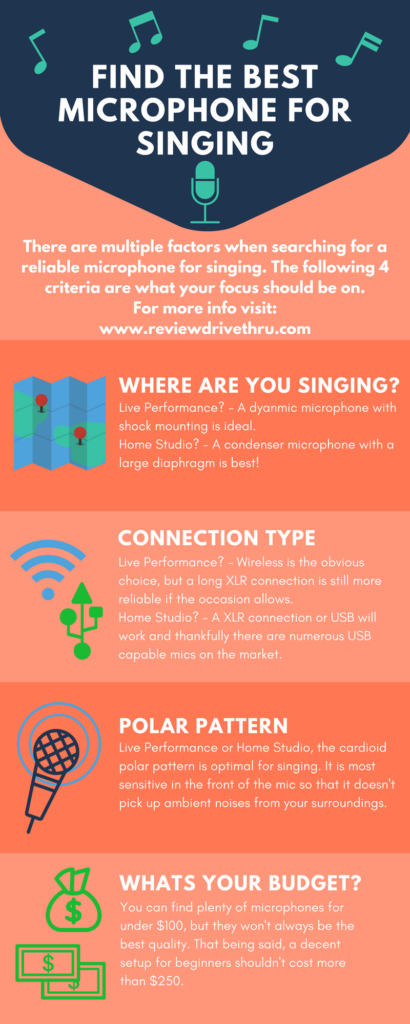Top 7 Best Microphones For Singing [Beginners]
Table of Contents:
- Introduction
- Grid Of Microphone Options
- Blue Yeti
- Samson Meteor
- Rode NTK
- Shure SM58
- Focusrite Scarlett Solo Studio
- Shure SM7B
- CAD U37
- Extras to get with a Microphone
- Infographic and Microphone Buying Guide
- Conclusion and Comments
Introduction:
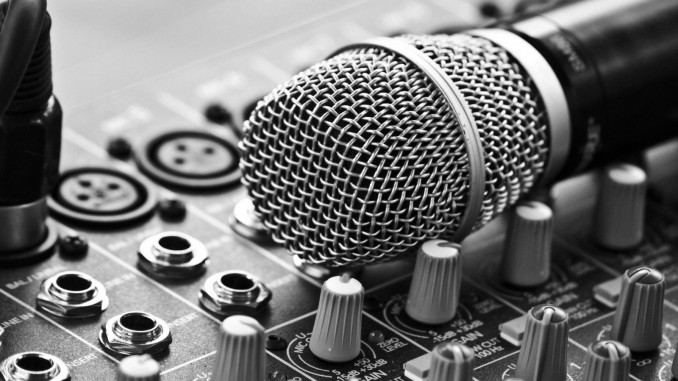
When shopping for the best microphone for singing, you’ll encounter a wide variety of options at varying prices.
There are multiple specifications and features that can make it difficult to decide the best one for you.
But when you’re aiming to record that golden voice of yours, you want to make sure you have a proper vocal mic to fully capture your melody.
So we’re going to look at a few options for picking a vocal recording mic based off certain criteria that will best suit a beginner or intermediate singer. Such as using the microphone to record in a home studio, if it has a USB or XLR connection, and that it should be made to capture vocals clearly.
So let’s get started and see the best microphones for singing!
Below is a list of the best vocal recording microphones. Each one is reviewed further down the page, but the grid is here to offer easy comparison and which vocal mics we’ll be looking at.
NOTE: Condenser mics are usually best for a studio environment and dynamic are best for live performances. If you want to read more on condenser mics vs dynamic, please read thoughtcos article covering the topic.
Electric Guitar Comparison Table
| Microphone | Type | Connection | Check Prices |
| Blue Yeti | Condenser | USB | Check Prices |
| Samson Meteor | Condenser | USB | Check Prices |
| Rode NTK | Tube Condenser | XLR | Check Prices |
| Shure SM58 | Dynamic | Wireless or XLR | Check Prices |
| Focusrite Scarlett | Condenser | XLR/USB | Check Prices |
| Shure SM7B | Dynamic | XLR | Check Prices |
| CAD U37 | Condenser | USB | Check Prices |
Blue Yeti USB Microphone – The Best Beginner Microphone For Singing
The Blue Yeti is the first on the list because of its vast capabilities. If you’re looking for an affordable microphone that can handle just about any task, then this is it. First, it is a condenser recording mic with an option for cardioid polar pattern. That is the optimal microphone combination you want for vocals if your plan is to record someone singing.
Add on the fact that it’s under $150, it has Plug n’ Play USB connection for Mac and PC, it has other polar pattern options for recordings, gain control, and a zero latency headphone output. It is easily the best all-around recording microphone that can suit just about any purpose while being affordable.
Although, the negative reviews are far and few between. It has over 5,500 positive reviews on amazon and many others have attested to its usefulness including /r/singing and Quora users.
It also won Wirecutters best usb microphone! Probably because the quality of the audio doesn’t sound like a usb.
Overall, this is best microphone for singing if you’re a beginner. That’s why we placed it first on our list of vocal recording mics.
Blue Yeti Specifications:
- Type: Condenser Microphone
- Polar Pattern: Cardioid, Omnidirectional, Bidirectional, Stereo
- Connection: USB
- Frequency Response: 20Hz – 20kHz
- Bit Rate: 16bit
- Max SPL: 120dB (THD: 0.5% 1kHz)
- Weight: 4.5 Ounces
- Dimensions: 5 x 5.5 x 10 inches
- Very affordable
- Multiple polar patterns
- Plug n’ play USB connection
- Reported issues with USB cable bought with mic
Blue Yeti
Samson Meteor – USB Studio Microphone
Next up is the Samson Meteor, a large diaphragm condenser usb mic. It has a similar build to the Blue Yeti, but for a fraction of the price. Also, it still has the cardioid pickup and the added feature of folding for easy storage and travel.
It has a smooth frequency response and 16-bit, 44.1/48kHz resolution.
Finally, like the Blue Yeti, it is also a plug n’ play USB microphone. No need to install extra drivers or software, it is compatible with most computers and even iPads.
Samson Meteor Specifications:
- Type: Condenser Microphone
- Polar Pattern: Cardioid
- Connection: USB
- Frequency Response: 20Hz – 20kHz
- Bit Rate: 16bit
- Max SPL: 120dB
- Weight: 1.1 lbs
- Dimensions: 5 x 3 x 6 inches
- Very affordable
- Plug n’ play USB connection
- Folds for easy storage and travel
- A better bit rate is always preferred, but 16 bit isn’t a deal breaker
Samson Meteor
Rode NTK Tube Condenser
Next up is the Rode NTK Tube Condenser Microphone. This is a tube microphone made for recording vocals and offers quality pickup. It has an XLR connection unlike the previous USB capable mics, so be sure to take that into account.
Another add on is that the Rode NTK is a bit pricey compared to other vocal mics on this list, but not so much compared to other tube microphones.
That being said, an XLR connection is always preferred as you progress. This is because of the sound quality an XLR connection provides compared to a USB.
Rode NTK Tube Specifications:
- Type: Tube Condenser Microphone
- Polar Pattern: Cardioid
- Connection: XLR
- Frequency Response: 20Hz – 20kHz
- Max SPL: 158dB
If you want more information on the specs, Rode offers a great breakdown of their microphone and its specs.
- Internal Shock mounting
- Wide Dynamic Range
- Rich sound for vocals and instruments
- A bit pricey if you’re just a beginner getting their feet wet
Rode NTK Tube Condenser
Shure SM58 Vocal Microphone
Next up is the Shure SM58! The past few microphones were condensers best made for studio recording. However, the SM58 is a dynamic microphone with a cardioid pickup pattern also made for vocals.
It’s very popular and you’ve probably seen it numerous times being used for live performances. It’s an ideal choice for live singing because of its tailored engineering towards vocals and having a pneumatic shock-mount system to minimize handling noise.
It also comes with a built in pop filter and frequency response that is made to pick up those golden vocals.
Overall it is a quality brand and well known in the industry, just be cautious of the distributor you buy from.
Shure SM58 Specifications:
- Type: Dynamic Microphone
- Polar Pattern: Cardioid
- Connection: XLR
- Frequency Response: 50Hz – 15kHz
- Max SPL: 94dB
- Reliable brand
- Pneumatic shock mount
- Great for live performances
- Gain and volume control problems
Shure SM58
Focusrite Scarlett Solo Studio
The next recording microphone is actually a small studio set.
The studio set comes with a condenser mic for vocals, audio interface, XLR connector cables, stand, pop filter, and headphones. This way you knock out all your purchases in one place for recording equipment at a cheap price.
While you can buy the microphone by itself, we highly recommend making the investment for the set.
The Focusrite Scarlett Studio set is a perfect and affordable solution for someone looking to get into singing.
Also, while at first glance the studio set appears to only have a XLR connection, the audio interface does have a USB port that will connect to any computer.
Focusrite Scarlett Specifications:
- Type: Condenser Microphone
- Polar Pattern: Cardioid
- Connection: XLR/USB
- Frequency Response: 20 Hz – 20 kHz
- A/D Resolution: 24-bit/192kHz
For extra specs and information, Focusrite provides a great write up of their product.
- Contains numerous extras that make up a home studio
- Affordable
- Fantastic vocal quality
- Nothings perfect but I couldn’t find one
Focusrite Scarlett Solo Studio
Shure SM7B
The Shure SM7B is the next dynamic microphone on the list. It has a cardioid polar pattern, bass roll-off, and added on pop filter.
While it is a dynamic mic, it was made for vocals in a studio environment.
It provides a crisp and clean tone despite being dynamic. This due partially to the added bass roll-off
Overall, the SM7B is great for a vocalist who knows how to use equipment like this and prefers a dynamic microphone. Also, if you’re looking for a comparison to the sound it may provide, this microphone is commonly used in radio broadcasting.
Shure SM7B Specifications:
- Type: Dynamic Microphone
- Polar Pattern: Cardioid
- Connection: XLR
- Frequency Response: 50 Hz – 20 kHz
- One of the top dynamic mics for vocal recording
- Add on pop filter
- Costly compared to other microphones
Shure SM7B
CAD U37 – The Budget Friendly Microphone
The next mic is probably the most budget friendly microphone on here.
This is the microphone to get your little ones who are picking up singing and you don’t want to break bank.
The U37 is a condenser microphone with a cardioid pickup, 10dB overload protection to prevent distortion, and a bass reduction switch.
It is USB capable and no software is needed to use it. Simply plug it into a Mac or Windows computer and start recording.
In summary, if you’re absolutely starting out fresh and are looking to save money, this is one of the best microphones for singing that won’t hurt your wallet.
CAD U37 Specifications:
- Type: Condenser Microphone
- Polar Pattern: Cardioid
- Connection: USB
- Frequency Response: 50 Hz – 20 kHz
- Very affordable!
- 10dB overload-protection
- USB Compatible with any computer
- A starter microphone, so not professional quality compared to others.
CAD U37
Singing Microphone Extras
We’ve covered useful singing mics for beginners, but there are still some extras you may want. If your budget will allow be on the lookout for:
- Mic Stand – If you’re singing, then you’ll want proper posture so you don’t have to lean forward or whatever direction. Being able to get the microphone properly positioned is important and that’s exactly what a mic stand is for. Check out Gearank.com for more info.
2. Pop Filter – No one wants that annoying “POP” from singing or speaking certain syllables, hence the pop filter. It’s a shield to protect your mic from picking up these annoying impacts of air.
3. Cables – Sadly, all these break down over time or sometimes they just aren’t made perfect. Having backup cables for your setup will always help, especially if you can afford quality.
Buyers Infographic Tips
Share this Image On Your Site
Buyers Guide Summary
Where are you singing?
- Dynamic (Suitable for onstage and live performances) – Use inductive coil connected to diaphragm and placed in a permanent magnet. Usually rugged and have high SPL-handling. Also have shock mounting to handle hand use and the polar patterns reject off-axis sounds. Hence why they perform well in live, on stage situations.
- Condenser (Used commonly in a studio as they’re more sensitive) – A thin conductive diaphragm is close to a metal backplate creating a capacitor. Sound causing the diaphragm to vibrate change the distance between it and the backplate. They are used for a variety of purposes including instrument recording. Large diaphragm mics are best for vocals and small diaphragm are usually chosen for instruments.
- Ribbon (extremely delicate) – Instead of a diaphragm like a dynamic mic, they use a thin ribbon that vibrates. Often use for studio use for voice and instruments.
Connectivity
- USB – Ideal for home recording. If you’re just starting out and an audio beginner, you’ll most likely want something that can simply connect to your computer.
- XLR – Better audio and the preferred connection if you’re looking slightly better quality.
- Wireless – Will you be moving around a lot while you sing? Then this is the one you’re looking for. They have a battery powered transmitter to allow greater range of movement. Also these add in an extra scenario that allows for noise in the circuitry. Ensure any wireless mic has adequate nose reduction and the best usually transmit in the UHF range.
Polar Pattern
The polar pattern is important for vocals. Aim for large diaphragm cardioid pickup patterns which will pickup from one direction on the mic and not so much from peripherals. Here’s more information if you want to know the difference between small and large diaphragm condensers.
Budget
You can find plenty of microphones for under $100. However, to find a great recording mic, you may have to reach a bit deeper into your wallet. The field of singing is an area where quality definitely matters.
Summary Of The Best Microphones For Singing
There are the best recording microphones for singing! So best of luck making your voice heard whether you’re in rural America or the big city!
If you have any more question, feel free to comment or email us!
